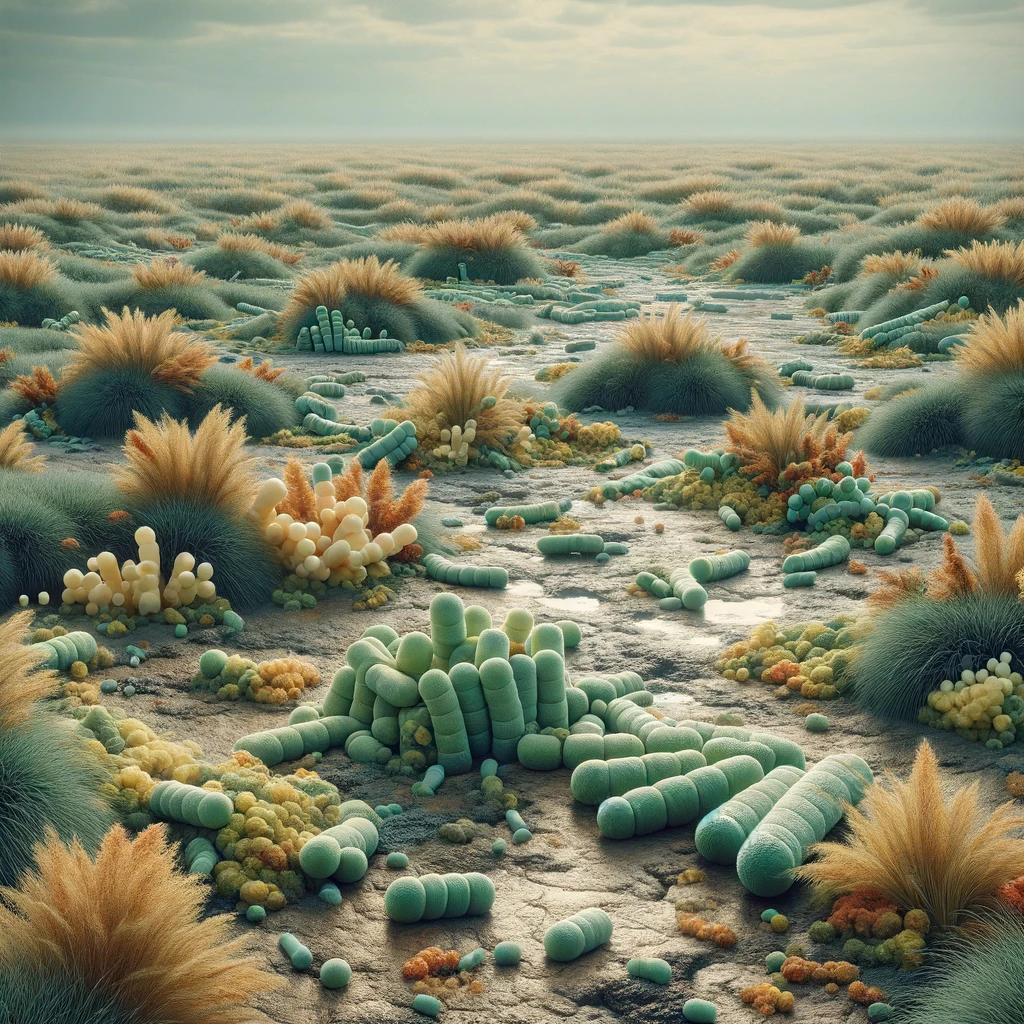
Bacteriocins at a Glance
Bacteriocins are fascinating natural compounds that represent a critical part of the bacterial arsenal for survival and dominance. Understanding and utilizing bacteriocins is at the heart of Organicin Scientific's mission. The company delves into the complexities of these natural compounds with the aim of harnessing their unique properties for innovative applications. Delve deeper with us as we look at how and why bacteria use bacteriocins, and their fascinating evolutionary backstory.
How Bacteriocins Work
Targeting Specific Bacteria
Bacteriocins are proteins produced by bacteria that kill or inhibit the growth of other, often closely related bacterial strains. They do this by targeting specific receptors or structures on the surface of the target bacteria. The specificity of bacteriocins to certain bacterial strains localizes the evolutionary pressure, reducing the spread of resistance. This specificity is what makes bacteriocins different from broad-spectrum antibiotics.
Mechanisms of Action
Bacteriocins can exhibit various mechanisms of action, such as forming pores in the target bacteria's cell membranes, leading to cell death, or by interfering with essential cellular processes of the target bacteria. They typically attack essential, conserved processes in competing bacteria, making it difficult for these bacteria to evolve resistance without compromising their own survival.
Why Bacteria Produce Bacteriocins
Competitive Advantage
In the natural world, bacteria are in constant competition for resources and space. By producing bacteriocins, a bacterial strain can inhibit or eliminate competing bacteria in its vicinity, giving it a survival and reproductive advantage.
Intra-species: Some bacteriocins are specific enough to target closely related strains within the same species. This ensures the producing strain's dominance within its own microbial community.
Inter-species: Bacteriocins can also target different species, helping the producing bacteria compete against a broader range of microbes.
Environmental Niche Control
Bacteriocins help bacteria maintain control over their ecological niches. By suppressing competitors, they can dominate a particular environment, whether it's a section of soil, a part of the human body, or any other microbial habitat.
Population Controls
Under stressful conditions, such as nutrient scarcity, some bacteria produce bacteriocins as a survival strategy, eliminating competitors to ensure access to limited resources.
Evolutionary Perspective
Natural Selection
Bacteriocins emerged due to evolutionary pressures. Bacteria that were able to produce these proteins had a better chance of surviving, leading to the preferential evolution of bacteriocin-producing traits.
To illustrate, imagine a situation where a bacterium living within a plant is threatened by another bacterium that intends to infect and harm the plant. If the resident bacterium can produce a bacteriocin that is effective against this specific invading pathogen, it gains a reproductive advantage by protecting what is essentially its home.
Diversity of Bacteriocins
The evolution of bacteriocins has led to a vast diversity of these proteins, each adapted to target specific types of bacteria in specific environments. This diversity is a direct result of the varying conditions and competitive landscapes encountered by trillions of different bacterial species over billions of years.
Co-evolution with Targets
The targets of bacteriocins, often competing bacteria, may evolve resistance mechanisms. This leads to a continual evolutionary arms race, where bacteriocins evolve to overcome resistance, and target bacteria evolve new forms of resistance. This game of rock-paper-scissors makes it challenging for target bacteria to develop comprehensive resistance strategies. Each resistance gene carries a ‘cost’, and it becomes too expensive to maintain several resistance mechanisms.

Dive Even Deeper
Into the Potential of Bacteriocins
-

Aquaculture
Bacteriocins offer significant potential in aquaculture by acting as natural antimicrobials to control fish pathogens, thus reducing reliance on antibiotics. Their specificity targets harmful bacteria without disrupting beneficial microbiota, enhancing fish health, promoting sustainable practices, and improving overall aquaculture productivity and environmental safety.
-

Agriculture
Bacteriocins present a promising natural alternative to chemical pesticides and antibiotics. They selectively target harmful bacteria and pathogens, protecting crops and livestock while preserving beneficial bacteria. This approach could lead to healthier, more sustainable agricultural practices, and reduce environmental and public health risks associated with conventional agrochemicals.
-

Human Health
In human health, bacteriocins hold potential as precise antimicrobials targeting harmful bacteria, thus minimizing the use of broad-spectrum antibiotics. Their specificity not only combats antibiotic-resistant strains but also enables modulation of the human microbiome, maintaining gut flora balance, improving digestive health, and enhancing overall immune function.
-
-
-
